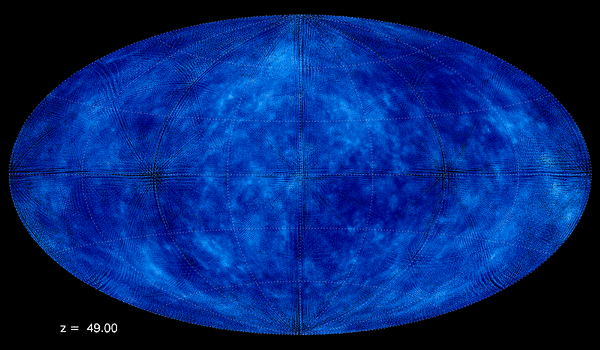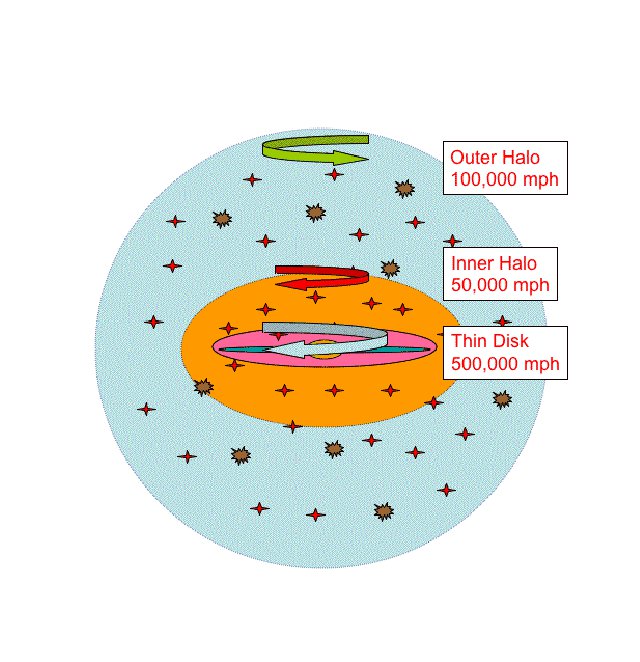6 May 2014
A team of galactic archaeologists has uncovered new insights into the formation of the earliest stars and galaxies by observing the chemical signatures of ancient ‘fossil’ stars present in the outer and inner halos encircling the Milky Way.
“We now know that some of these fossil stars are as close as we’ve come to a perfectly pristine star made out of only material processed by the Big Bang, and we believe that they have recorded the very first nucleosynthesis events in the universe,” says Macquarie University researcher Daniela Carollo.
Both the outer and inner halos of the Milky Way contain carbon-enhanced metal-poor (CEMP) stars. Some of these stars were born before the Milky Way was assembled, and are characterised by low metal content compared to the Earth’s Sun, and a large amount of carbon in their atmosphere. They also present a peculiar pattern of light chemical elements like magnesium, calcium, and oxygen.

Galaxy formation. Credit: Jason Tumlinson
The team of Australia and US based researchers has further observed that the outer halo contains a greater number of CEMP stars with low levels of elements heavier than iron (CEMP-no). In contrast, the inner halo contain high quantities of CEMP stars that are also enhanced in elements heavier than iron (CEMP-s).
“It is this difference between the inner and outer halo stars’ chemical signatures that reveals much about the formation of galaxies and the first stars,” said Carollo.
“Around 400 million years after the Big Bang, the first stars appeared, composed of the elements the Big Bang produced – hydrogen, helium and lithium. This pristine population has never been observed, but they left their chemical signature in the next generation of stars.
“We believe that this signature is carried by the CEMP-no class of stars. Indeed almost all the most metal deficient stars in the Milky Way belong to this category.
“The most metal poor CEMP-no stars we observe were born before the Milky Way formed, in gas clouds polluted by the explosions of the first stars, which had produced and left behind heavier elements.
“Essentially, the ‘purer’ the star’s chemical signature, or the lower the presence of heavy metals, the older the star, and the closer we come to the start of the universe.
“We now see that the outer halo stars contain the chemical signature of the first stars.”
CEMP-no and CEMP-s stars had different ancestors. In the case of CEMP-no stars, it was the explosion of massive first stars. The CEMP-s stellar progenitors were intermediate-mass stars with a low mass companion with which it underwent mass transfer.
“Understanding the formation of the CEMP-no and CEMP-s and their chemical structure in combination tells us how massive the initial gas clouds were, and how many stars were present in these clouds,” said Carollo.
The discovery suggests the gas clouds that formed the inner halo of the Galaxy were massive and crowded with stars two to three times the mass of the Earth’s sun, while the gas clouds that formed the outer halo were smaller and containing one or few stars that lived a short period (a few million years) before exploding and producing the distinctive pattern of heavier metals.
This pattern appears in most of the ultra metal poor stars, including the recently discovered oldest star in the galaxy, which is 13.6 billion years old (Nature 2014).
The next step for the researchers is to determine whether the pattern they have observed in the formation of our galaxy is evident further back in time, and in other galaxies.
“Data also shows that galaxies at redshift z=2.3, which corresponds to 2.9 billion years after the Big Bang, show large amounts of carbon and similar chemical patterns of light elements. We believe that the same chemical signature is present at higher redshifts and earlier time of the primordial Universe.”
The article “Carbon-Enhanced Metal-Poor Stars: CEMP-S And CEMP-No Sub-Classes in the halo system of the Milky Way” has been published in The Astrophysical Journal.
Collaborating institutions and funding
D. Carollo conducted the study with researchers from the Australian National University; National Optical Astronomy Observatory, Tucson, Arizona, USA; Space Telescope Science Institute, Baltimore, USA; Gemini Observatory, Hawaii, USA; Australian Astronomical Observatory.The study was funded by the Australian Research Council.















